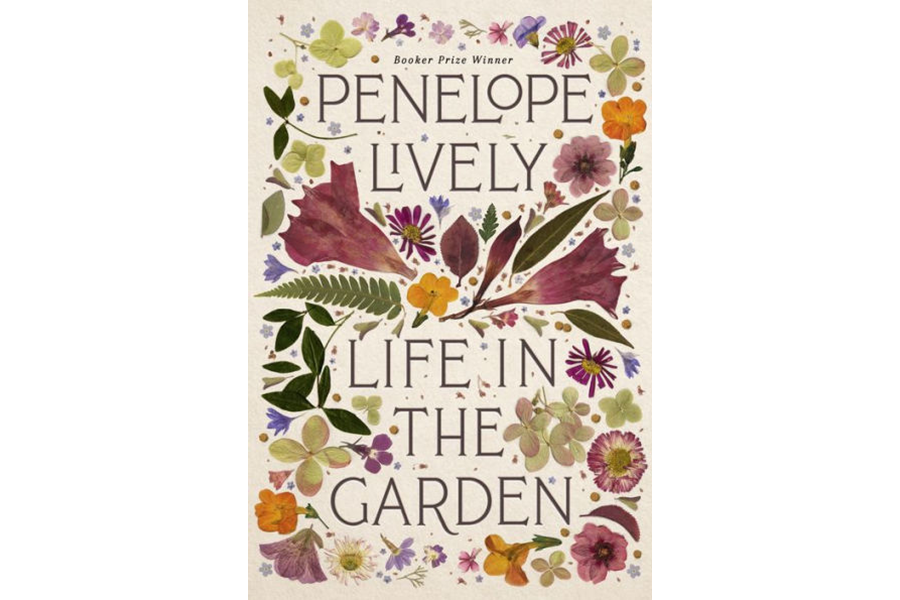'Life in the Garden' lovingly recalls the place of gardens in an author's life
Loading...
In the beginning, there was a garden. This is true in the Bible, of course; Adam and Eve living in that teeming paradise, repainted and reimagined by artists across centuries. But it was also the case for Claude Monet, who carefully designed his flower beds so that later he might paint them, and for Virginia Woolf, who wrote of the inspirational power of dirt under her fingernails. The garden was there for Beatrix Potter’s country mice to learn their lessons and to bestow metaphor on the coded conversations of Edith Wharton’s socialites. Indeed, consider the point broadly enough and the garden marked the beginning of Western civilization overall, agriculture being the large, utilitarian version of today’s flower beds and vegetable patches.
There was a garden first for Penelope Lively, too. Hers was in Egypt, long before the accolades for a life of writing, the Booker Prize for fiction, and the Carnegie Medal for children’s literature. Her mother had created an English style garden on the outskirts of Cairo, with lawns and rose beds, lily ponds and pergola walks. There, Lively writes in her captivating new book, Life in the Garden, she found the sort of hiding places in which a child can commune with trees and lose herself in books; the “twiggy hammock in a hedge,” or “the bamboo-shaded water garden where tadpoles massed around the roots of the arum lilies.”
“I can still draw a map of this garden in every detail,” she writes. “It no longer exists; the whole of that area has long since been subsumed into Cairo’s urban sprawl.”
“Life in the Garden” is not an autobiography, at least not explicitly. Lively begins by exploring the garden’s place in art and literature (perhaps veering a tad too close now and then toward a book report) and then explores the changing fashions of gardening and what gardens may show about class distinctions. But glimpses of her own life appear throughout the book, often anchored by matter-of-fact juxtapositions of beauty and loss – the lush garden outside Cairo now covered by slums, the knees and back that no longer let her dig up weeds herself.
“I always pay attention when a writer conjures up a garden,” she writes early in the book. “Is this garden deliberate or merely fortuitous? And it is nearly always deliberate, a garden contrived to serve a narrative purpose, to create atmosphere, to furnish a character.”
And so it seems in this mosaic of musings and memoir, art history and social commentary. There may be no clearly defined narrative to “Life in the Garden,” no obvious Victorian-era color-coordinated plantings; no severe, Versailles-inspired hedging. But the book falls together beautifully, organically and carefully, like the English gardens Lively loves.
Lively is decidedly British and of a certain class from which she can write about her grandmother’s Gertrude Jekyll-style “rill and sunken rose garden, lawns and ha-ha, kitchen garden, summerhouse and potting shed.” She herself has had two Oxfordshire gardens, at least one with two streams running through it, although she now lives in London with an urban, in battle with the foxes.
Yet there is nothing pretentious or precious in her writing. She is gracious to the rest of us who may need an iPad to look up the plant names scattered liberally throughout the book (indeed, she says she has done the same reading other’s works) and is equally clear-eyed about the resources, both financial and ecological, to create the sort of gardens she most admires.
(I first read her book in April, when those of us in New England were still clutching our seed packets, waiting for the threat of frost to depart for at least a few months, and it was gratifying to read her description of “that ferocious east-coast climate – the hot humid summers, the frost and snow of winter, and a challengingly short growing season.” She had spent much time in the 1980s with her American friends here, she writes, and much admired their “determination and tenacity in getting any sort of a garden going for the summer – the planting out of annuals, and then the desperate efforts to protect them against what seem every kind of onslaught, from the woodchucks that would dig them up to a wealth of chomping insects.”)
She particularly shines in her chapter about the garden, time, and order.
“To garden is to elide past, present and future; it is a defiance of time,” she writes. In her hands, gardening becomes memory, hope, the imagination of future. It is an ordering against chaos while inevitably temporary.
While gardening, she writes, “we step beyond the dictation of time. We create order. We design and direct. We get right in there with the plants, escape worldly worries…. When hard at it, none of this is relevant; it is simply a matter of intense engagement with cutting back, taking out, putting in, with this rose, that weed, these seeds, bulbs, tubers. As an occupation, it seems to me unparalleled; productive beneficial, enjoyable. What more could you want?”









